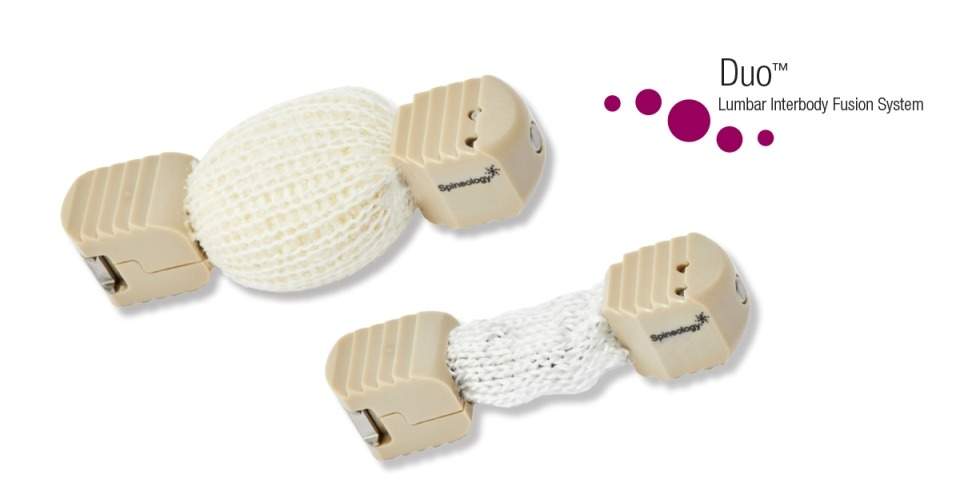Spineology stated that more than 125 lateral interbody fusion cases have been completed using its Duo lumbar interbody fusion system.

Image: Spineology Duo Interbody Fusion System. Photo: Courtesy of Business Wire.
The Duo System features the only implant on the market that combines PEEK, titanium, and graft containment mesh elements. The implant, which is filled with bone post-insertion, creates a large, endplate-conforming graft pack that expands up to 30mm in width to maximize load sharing and minimize point-loading.
These features are designed to reduce subsidence, improve spinal correction maintenance and support a robust fusion. In addition, the system significantly decreases the surgical access required to place the implant compared to traditional lateral systems.
By minimizing the neural and soft tissue retraction typically required in these surgeries, Spineology believes the Duo System will reduce the retraction related post-operative complications commonly associated with the lateral approach.
Spineology CEO John Booth said: “One of the main issues we’ve heard from surgeons regarding monolithic implants is that they don’t conform well to the concavity of the endplates, which can cause point-loading, potentially leading to subsidence and ultimately loss of spinal alignment.
“The Duo Implant was designed to address this issue by conforming to the endplates to provide a significant load sharing surface area, and we can deliver the implant through a very small access which we feel will have a positive effect on post-operative complications.”
The company is currently conducting a prospective, post-market lateral interbody fusion study using the FDA-cleared Duo System, with over 75 study cases completed to date. Early clinical results from the study are extremely promising and demonstrate an excellent improvement in VAS and ODI scores, and a reduction in post-operative complications commonly associated with the lateral approach compared to the published literature.
Paducah, Kentucky-based Clint Hill said: “The clinical results I’ve experienced with the Duo System are tremendous. The unique, endplate conforming footprint helps maintain spinal correction until fusion occurs, which is especially important in osteoporotic patients where implant subsidence is a concern.”
Paducah Kentucky-based K. Brandon Strenge said: “The design of most traditional lateral cages produces point loading, which can negatively affect graft loading.
“The Duo implant allows for load-sharing across the full length of the implant, including the graft contained within the mesh. Load-sharing between the implant and bone graft contributes to an optimal environment for fusion.”
Source: Company Press Release
